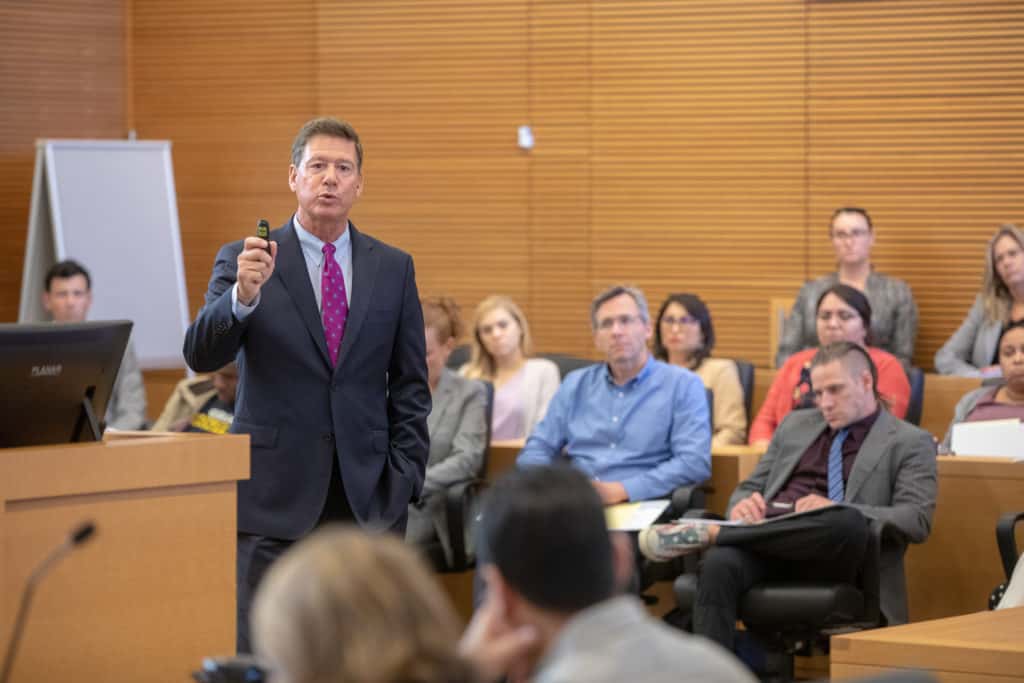Learn real-world courtroom skills from experienced trial lawyers and judges
Through its Evidence Program and College of Trial Advocacy, the San Diego Inn of Court has created an outstanding training opportunity at a great value. At less than half the cost of most trial advocacy classes, the Inn uses a direct and practical approach that involves learning from actual trial lawyers and judges. The workshops also provide opportunities for mentoring and lifelong, rewarding professional relationships. Improve your trial skills, serve your clients, and establish your reputation by working with some of the best trial advocacy instructors in San Diego.

Evidence Program
The Evidence Program prepares attorneys to confidently handle evidence in the courtroom. Expert seminars on the rules of evidence, coupled with real-life courtroom training, will help prepare you for your next trial.
Trial Program
In the Trial Program, lawyers learn and practice the elements of trial from a combination of outstanding lectures, top-notch demonstrations, and intensive courtroom workshops.
Articles
Learn trial tips based on decades of real court-room experience from our featured lecturers, demonstrators, and workshop leaders.
“I would say it’s absolutely worth the time, money, and effort. I really had no idea what I was getting into, so I just went into it with a good attitude and so far it’s been a great experience.”
Zachary S. Schumacher, Esq.





